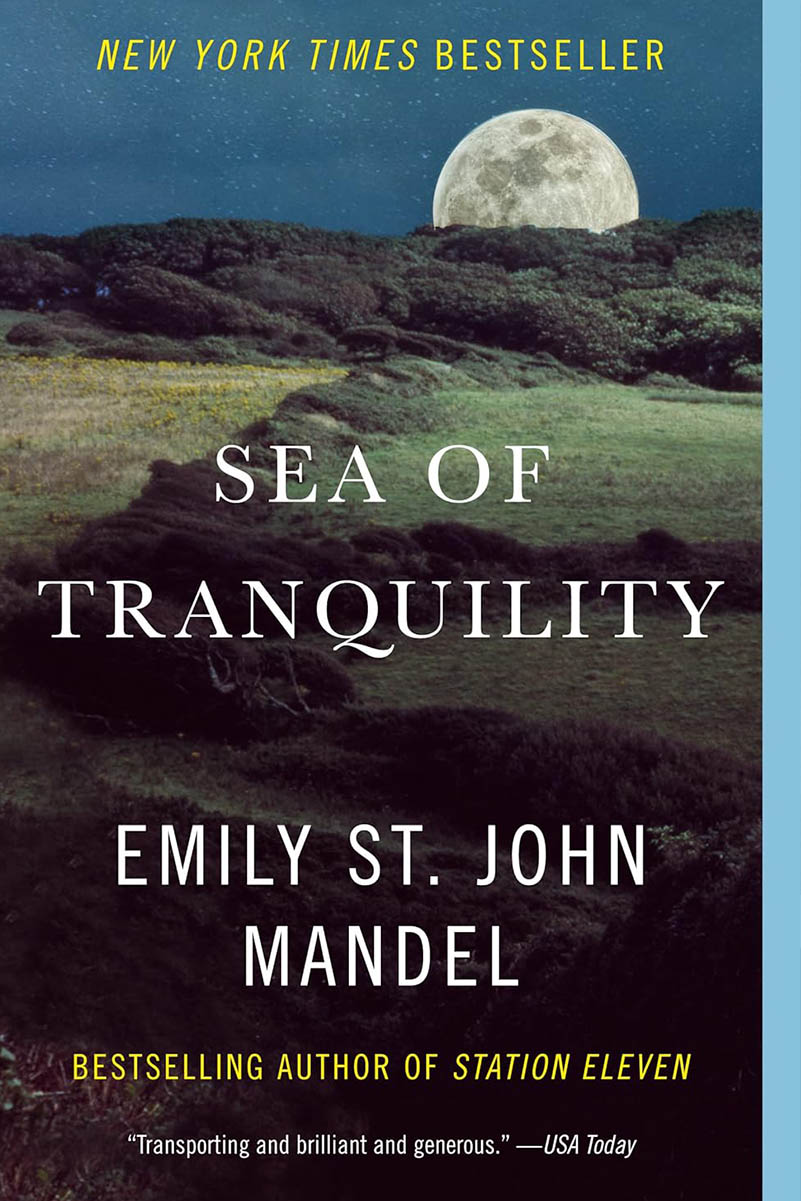Sea of Tranquility
by Emily St. John Mandel
Emily St. John Mandel, who has written six fantastic novels, is no stranger to suspense. Her most notable novel,
Station Eleven (2014), which recently got a successful TV adaptation, is about a pandemic that completely devastates the world and the aftermath, jumping from our present day to a future barren wasteland (with some colorful Shakespearean elements). She followed it with The Glass Hotel (2020), supposedly inspired by Bernie
Madoff and the 2008 crash, delving into a complicated Ponzi scheme that gets blown open. Her newest novel, Sea of
Tranquility, borrows from her other successes, referencing past characters and their plot-lines, as well as sharing similar themes of pandemics and catastrophe.
Sea of Tranquility, which seems to be one of the most popular books of the summer, grapples with a series of topics—from the moral complications of time-travel to early 20th century pseudo-farmer life—and transcends genres.
It offers sci-fi, mystery, historical fiction, and romance, but at its core, it’s a futuristic pandemic novel. While Station
Eleven demonstrates the worst-possible-scenario style of pandemics, Sea of Tranquility takes a more realistic and elegant approach—which makes sense, considering Mandel, writing during COVID, was able to get a better sense of a real societal reaction to such global crises. The book combines current catastrophe with futuristic elements, making the book not seem trite or overdone at a time in which pandemic-based novels are infiltrating the market. It creates a complex futuristic world, complete with fancy technologies and lunar colonization. The book’s title refers to the plain on the Moon where the fictional colony rests.
Sea of Tranquility flits from character to character, across a span of centuries, seemingly with no real reason—until the pieces begin to fit. The novel opens in 1912, with a young man exiled from England after making a few too many unsettling remarks about British colonization to his family, which has handsomely profited from it. The novel then flies to 2020, with two best friends who discuss the craziness of past events—such as an ex-husband who was involved in a Ponzi scheme and completely devastated families and their solvency; the swindler was a major character in The Glass Hotel. Then, to 2203, with a best-selling novelist doing her last book tour on Earth. All of these people are unknowingly part of some strange space-time anomaly; they’ve all interacted with a man in various disguises—a man confounding futuristic scientists. A strange man, who appears out of nowhere, talks with the exiled farmer, creeps out the two best friends on their walk home, and saves the novelist’s life. A time-traveler in 2401,
Gaspery Jacques, attempts to solve the meaning behind these strange occurrences. Slowly and skillfully, their stories thread together, and all of Mandel’s details come back to haunt the reader wonderfully.
The strange happenings to those four people seem to imply that the entire world is fabricated and an illusion.
Gaspery Jacques, while fitting in the puzzle pieces of this mystery, delves into the age-old theory of ‘What if our entire reality is indeed a simulation?’ Yet this time, it doesn’t feel age-old. What Mandel seems to be arguing through Gaspery is this: ‘what if this theory doesn’t actually matter? A life that is artificially created is still a life.’ Gaspery is forced to confront the ethicality of his actions—on whether or not it is worth disrupting 400 years of history and life to figure out the answer to his questions.
The flow, the complexities of the plot, and the characters all have a certain nuance and sophistication.
Mandel has truly outdone herself with this novel.



